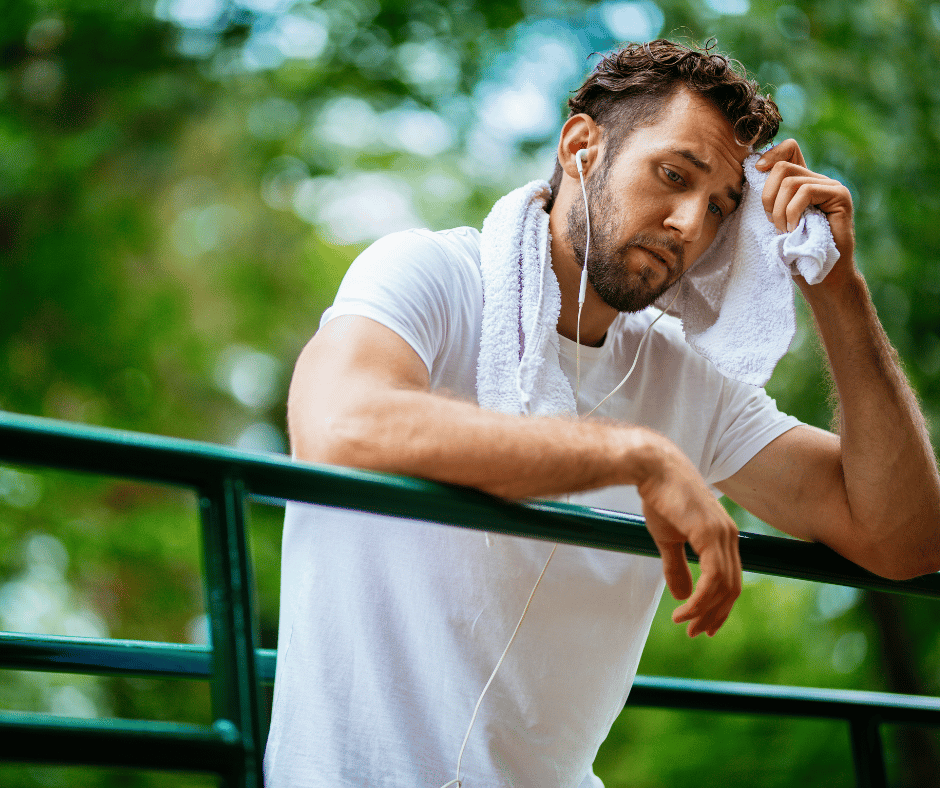
Yes it’s hot out there! And you are sweating! But is too much sweating a healthy thing?
Anytime that you are active outside in the heat, chances are you’re sweating. Sweat contains water, sodium and some potassium. As the water evaporates off your skin, it helps cool you down. The more active you are and the more extreme the temperature is, the more you will sweat. You could lose significant amount of electrolytes, putting you at risk for low blood sodium.
Symptoms of low blood sodium are nausea and vomiting, headache, confusion, loss of energy, drowsiness and fatigue, restlessness and irritability, muscle weakness, spasms or cramps. If untreated, it can lead to severe symptoms including seizures, loss of consciousness and coma. Seek emergency care immediately for anyone who develops severe signs and symptoms.
Everyday activities, such as mowing the lawn, walking the dog, or gardening aren’t likely to cause excessive dehydration through sweat. In some extreme activities, you might need to replace the sodium and potassium for optimal electrolyte balance. These activities would include endurance events like marathons, long-distance bike rides, or participating in sports that involve prolonged running like soccer or protective clothing like football. Occupations that are also likely to cause dehydration are farming, landscaping, working on road crews and firefighting.
To get a sense of how much fluid is lost during these activities, you can weigh yourself before and after a session. The weight loss difference will be the sweat that you lost during the activity. One pound of weight loss is roughly 2 cups of fluid. After the activity, hydrate with 16 ounces of fluid for every pound of weight lost. Thirst is generally a good guide to how much water or other fluids you need. Also try a small amount of a salty food, such as pretzels, salted nuts, crackers or chips.
Sport beverages will contain electrolytes that can replace the sweat that is loss while participating in endurance activities. But a 20 ounce bottle of Gatorade also contains 34 grams of sugar. If your workout activity is of mild intensity or lasts less than an hour, it would likely be a better choice to rehydrate with plain water. Rehydration tip: Eating a mere ½ ounce of pretzels and drinking 2 cups of water provides about the same amount of sodium as a 16 oz. sports drink!
Older adults are at increased risk for dehydration without even exercising in the heat. As we age, we lose our thirst mechanism, making it difficult to know when we need more hydration. Sodium levels may also drop for other reasons as we age. Certain medications such as diuretics, antidepressants and pain medications can interfere with the normal hormone and kidney processes. Always talk with your medical provider about the risks of a new medication. Medical conditions such as congestive heart failure and certain diseases affecting the kidneys or liver can cause fluids to accumulate in your body, which in turn will dilute the sodium in your blood.
Educate yourself and be aware of signs and symptoms of a low blood sodium. Thirst and the color of your urine are usually the best indications of how much water you need. If you are not thirsty and your urine is pale yellow, you are likely getting enough water. Eating a balanced diet and drinking water throughout the day will help you stay on top of your hydration and electrolytes.
By Jill Liepold, CLT(HHS), Windom Area Health Laboratory Manager
References:
https//www.MayoClinic.org – Hyponatremia, Mayo Clinic Staff.
Joanna Kriehn, MS, RDN, CDCES – Reg. Dietitian Nutritionist, Cert. Diabetes Care/Education Specialist.
